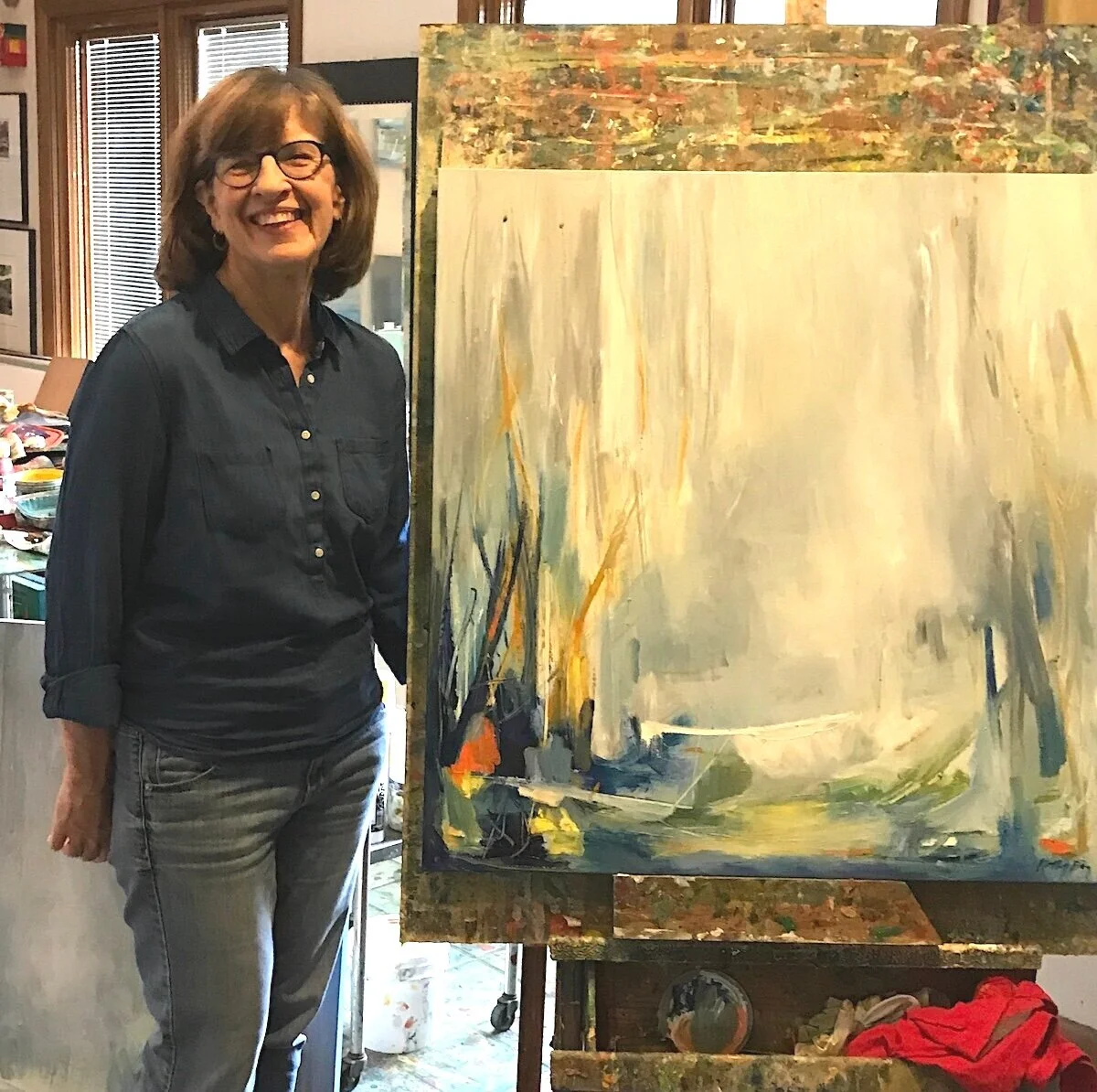Interview with artist Kathy Bay
Kathy Bay is a disciplined artist. She is known for her beautiful abstract landscapes, which inspire curiosity in the viewer through the use of shape, color and texture. She is technical in her approach to creating visually stunning abstracts that have found homes in many private and corporate collections throughout the country. Her works can be viewed at Boswell Mourot Fine Art in Little Rock and on her website, kathybay.com.

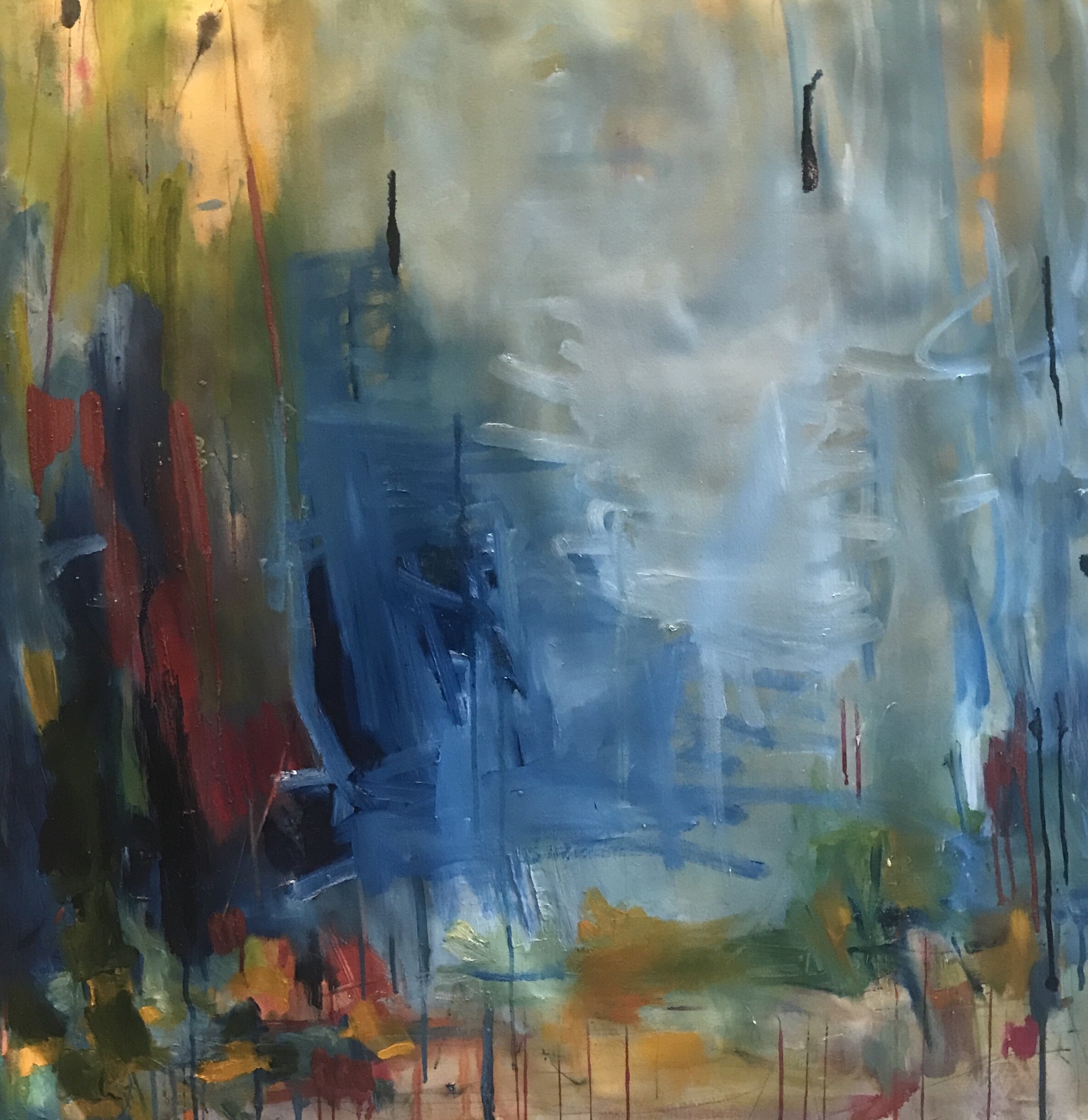

AAS: Are you a native of Arkansas?
KB: I was born and raised in Paragould Arkansas. I lived 3 years in South Carolina during an active duty military assignment. I have lived in the Little Rock area most of my life and briefly in Fayetteville, Mexico, Yellville, and Fort Smith.
AAS: Do you come from a family of artists?
KB: I don’t know of anyone related to me being an artist. I can honestly say that there was not a single piece of art in the house where I was raised. I was not exposed to museums and art exhibitions as a child. My father owned a sheet metal business and that type of work demands fabrication and imagination. I have often thought that his work played some influential role in my creativity. I always enjoyed being in the business and playing with scrap metal. There was one machine that I particularly liked because you could roll metal through it and create cool ridges in the metal….just for fun!
Family life currently is saturated with artistic individuals. My three children and their spouses amass an array of art endeavors and degrees to include art history, art education, painting, writing, filmmaking, photography, graphic design, motion graphics, and music.

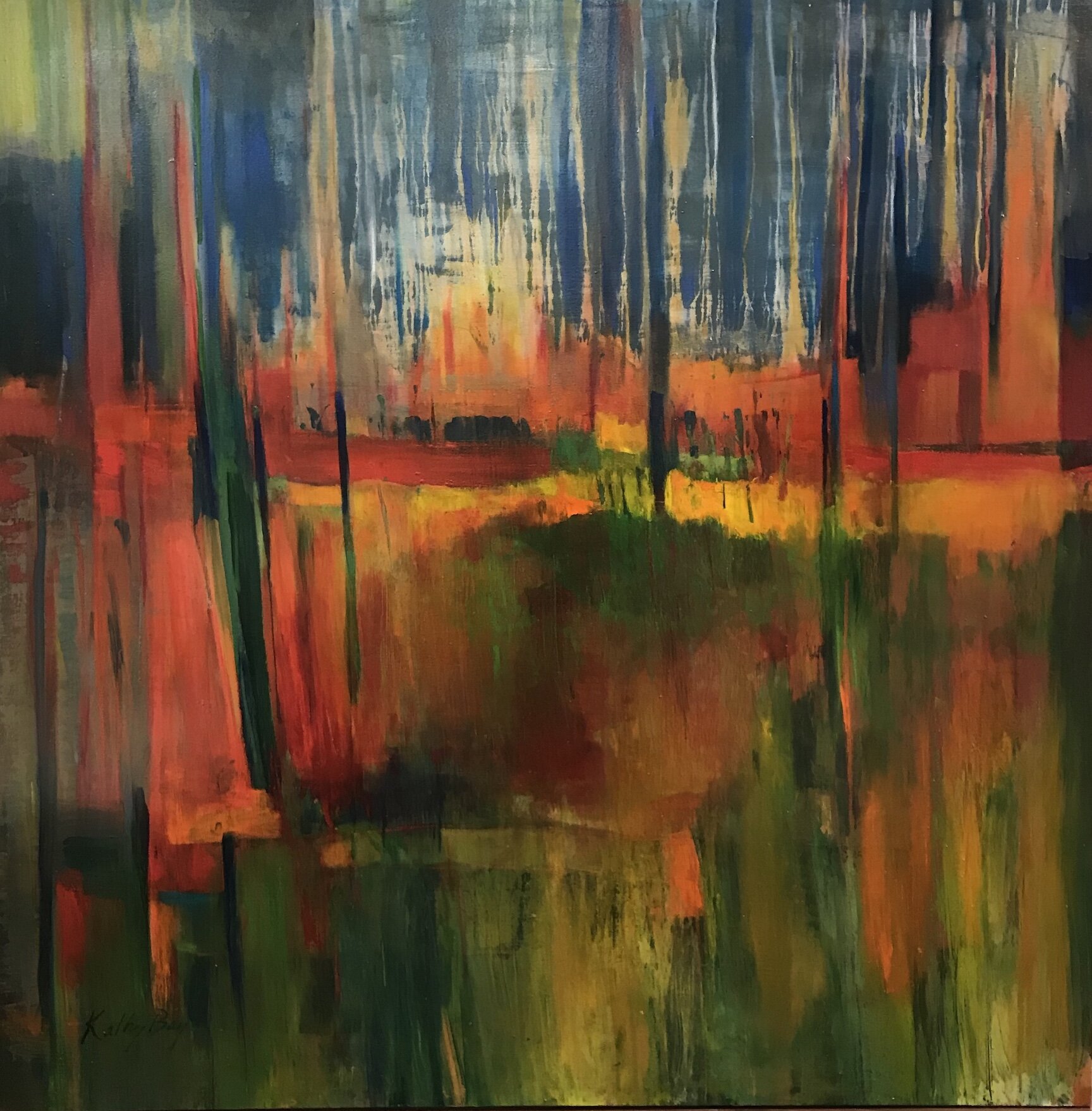
AAS: So then, how did you first become interested in creating art?
“The Influence of being raised in the country in Paragould … has impacted my visual imagery.”
KB: My first memory of an artistic person was of a nun who was assigned to the small Catholic school that I attended in Paragould. Being in third grade I vividly recall the church community being in awe of her talent. Art assignments and direction in her classroom are an early positive experience of creativity. I do not have a work from that time but I do remember a small image of myself with my Dad quail hunting walking through sage grasses.
Seventh grade art in public school was an experience that offered my first exposure to art history and famous artists. Our teacher would introduce an art movement, show works by artists of that movement and assign a project in the style of the artist. I still have a few works from that time. High school art class involved oil painting and an exhibition of works. I sold my piece for $10….Really! My choices for college majors were Physical Education/Recreation, Nursing, or Art. I started out in Physical Education/Recreation at the University of Arkansas and unsure of the job market upon graduation I decided to change my major to nursing. I enrolled at UAMS School of Nursing. During nursing school I dabbled in watercolor and woodcuts. I have no idea where the woodcut interest originated but I still have the tools I purchased during that time. In the midst of the nursing program at UAMS I joined the Army Nurse Corp. Military programs at the time would pay for my last two years of college including housing, books, nursing uniforms, etc. In return I was committed to active duty for three years. I jumped at the chance to join the military primarily because I was tired of working my way through school. Three years did not seem too bad and I might “see the world”.... I saw South Carolina... and had an incredibly positive experience in the military.
Using the GI Bill benefit after discharge I started master’s courses in Health Care Administration which I quickly figured out was not for me. Assured of employment with an RN license once again I reversed course. The obvious choice for a fun degree was art! With 2 children in tow (a 6-week-old and a 20-month-old), I enrolled at UALR in the BA program for art with emphasis in painting. Completing 6 or 9 hours each semester I graduated from the program in 1985 with a BA in Art.

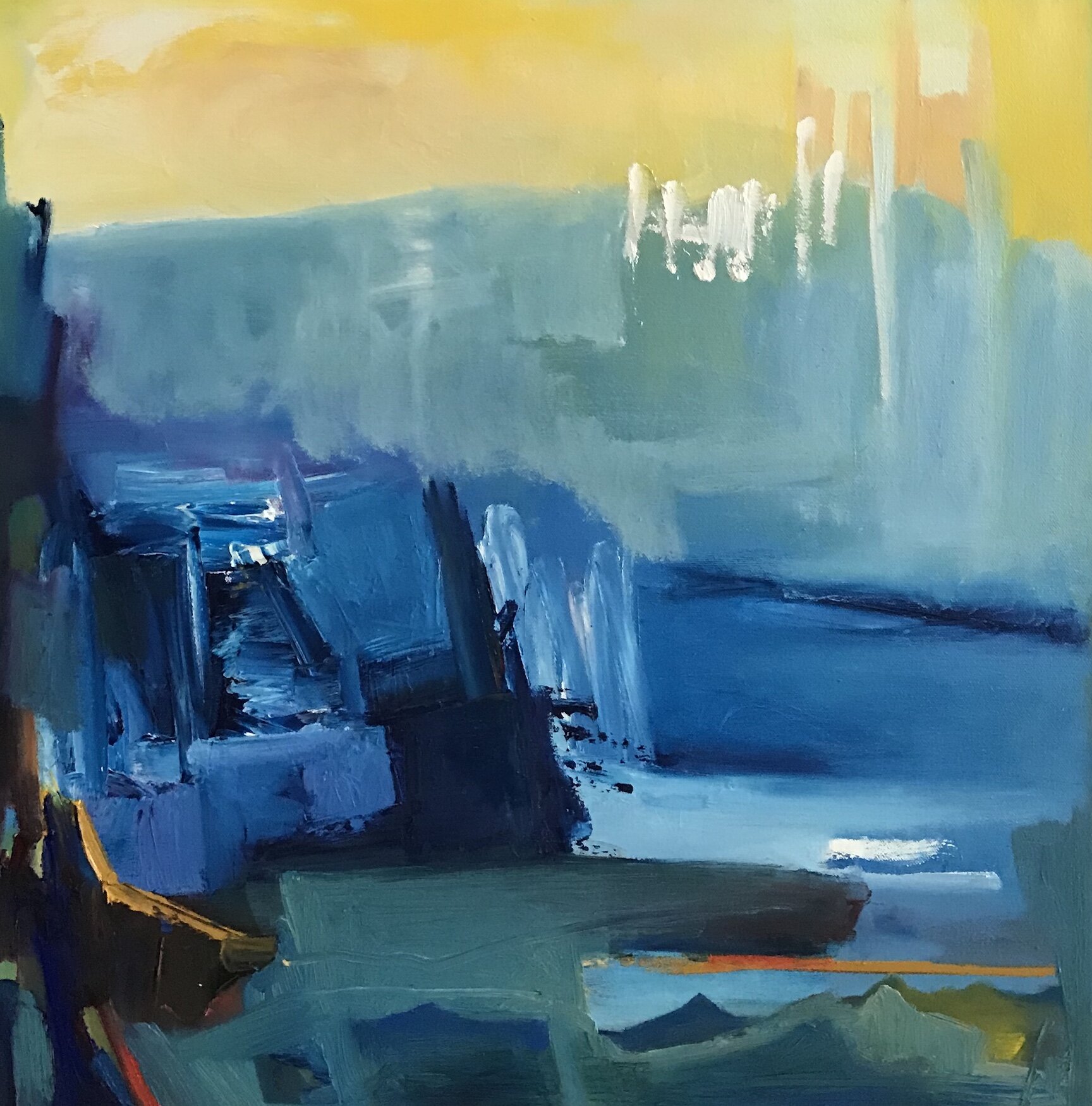
AAS: Have you always been an abstract landscape painter?
KB: Landscape is how I think when painting. The Influence of being raised in the country in Paragould where the creeks, gullies, fields, and woods served as my playground and exposure to quail hunting, fishing, frog gigging, golf, and family camping trips on the Spring River have all impacted my visual imagery. Realization of this impact certainly answers the question of my interest in landscape. I bring a unique approach in evoking a sense of landscape by pushing the parameters to achieve visual effects. Richly layered passages of color and interwoven components energize my work.
Recent Route III, oil on canvas, 36” x 36”
AAS: You have a number of series paintings like the Recent Route series, which is filled with texture and mood. Do you work on them one after another or are they painted whenever your mood inspires you?
KB: In my mind painting is work...hard work. I am self motivated to walk in the studio and work. I do “self-assignments”. My best example is: “I’m going to paint 10 paintings, 30” x 40” with 5’ borders, using collage.” Whatever the self-assignment demands is the end result. I will complete my self-assignments. (and please don’t ask me how self-assignments started!!) I finish one painting and then move to the next adjusting color choices, etc.
Recent Route III is a result of my adventure of painting in oils after years of using watermedia. Bold use of thickly layered oil and vivid color capture the intensity of the scenery. Recent Route III offers a rich surface quality and as you state is filled with texture and mood.
Marsh View I, acrylic collage on paper, 22” x 30”
AAS: Your mixed media acrylic and ink paintings on paper are very exciting. I love the Marsh View series and especially Marsh View I. Would you talk about that series and the circumstances or inspiration for those pieces.
KB: Occasionally I enjoy working as I had done in the past and in this case it was multimedia. I definitely was missing working on paper. There are four in this group of loosely applied acrylic and ink. I struggled with Marsh View I and eventually added collage. I really loved the lower left side area suggesting light through a marshy area and did not want to give up on this piece. Making several judgment calls regarding the large shape of yellow/green color was the change that pulled the piece together.
Better Offer, oil on canvas, 48” x 60”
AAS: I have to say I love Better Offer and its mysterious landscape. It is somehow both calming and exhilarating in its movement and coloration. How did this painting develop?
KB: Last summer I decided to return to oil painting after using acrylics for years. I painted 4 small pieces (10” x 20”) and moved on to 48” x 60”. The initial idea was to develop an atmospheric mood and minimal areas of intense color.. I am pleased with the result of Better Offer. Experimenting and returning to oils has been rewarding thus far.
AAS: You work on both canvas and paper. Do those surfaces inspire your abstract landscapes in different ways?
KB: I love the surface quality of paper when working with acrylics. The decision to work on canvas was to create larger works. Working large is exhilarating and allows for energetic application of paint. I stretched a 7’ x 7’ canvas for my first attempt at working large. I painted the canvas in my garage and soon discovered that I could not get it into the house. My brother, a PhD in chemistry, asked why I painted something so large. I told him that was a science question and it did not occur to me to ask why! I eventually managed to get the painting in the house by removing the front door.
AAS: Color is such an important component of abstract art. Would you explain your color choices?
KB: I have no fear of color! My “self-assignments” often dictate the initial color choices. The freedom lies in the fact that once I leave the departure point of a self-assignment anything goes. My paintings exude energy through the exciting use of color and the many layers of color. The principles and elements of design and color theory are always a part of the painting process. Judgements are made while producing a work both intuitively and consciously in color choice and in composition. Critique is important and valuable. Seeking a person to give an honest assessment of my work provokes more thought and discussion about art and often leads to more ideas for future paintings.
“In my mind painting is work...hard work. I am self-motivated to walk in the studio and work.”
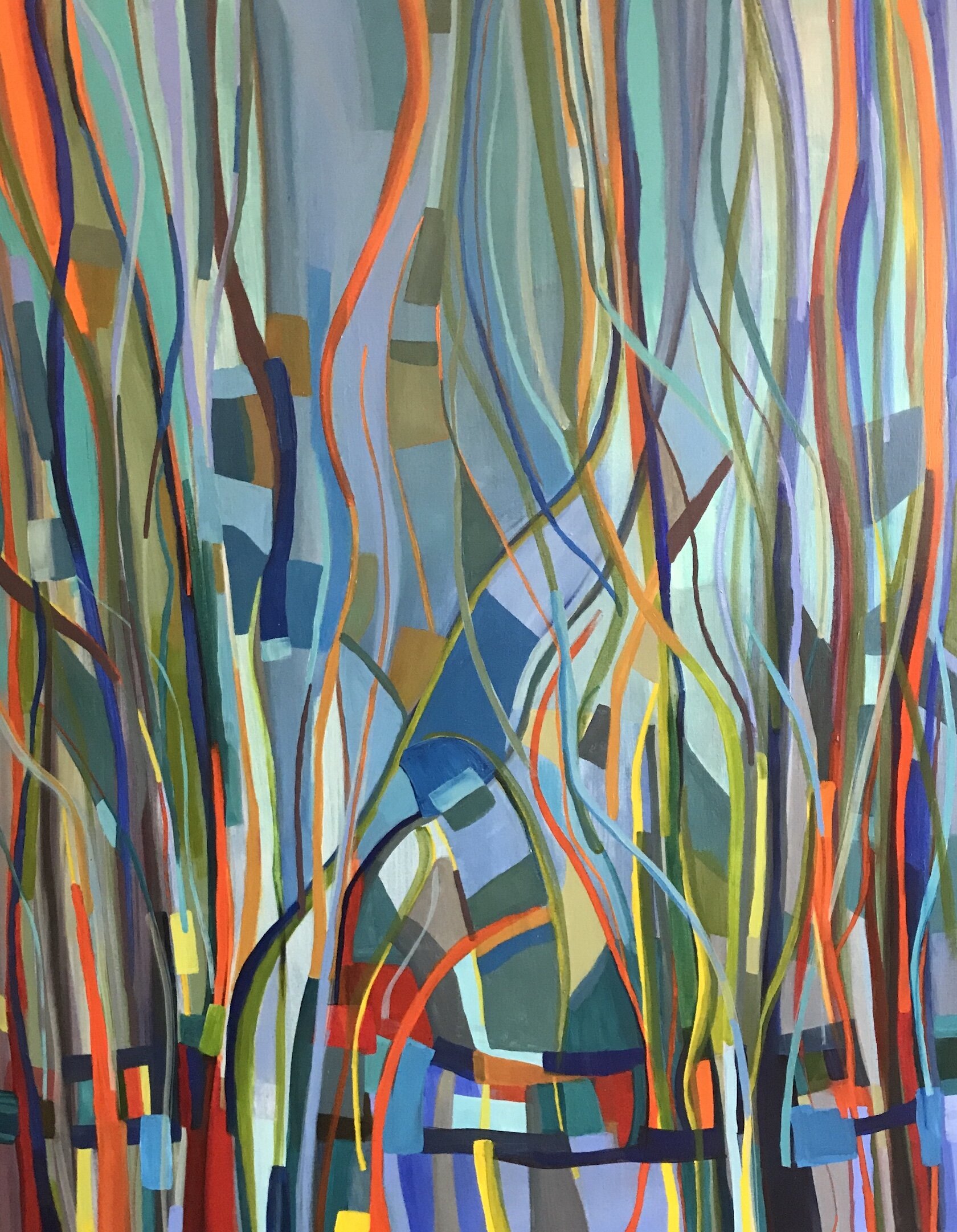

AAS: Your abstracts are vibrant and generally vertical in form and shape. Is that the way you ‘see’ landscapes when you look at scenery?
KB: You are right ...I tend to orient work vertically...I have no explanation. Better Offer is horizontal!!! Aha… maybe that is why I have chosen the square format lately!
AAS: You’ve taught adult and children painting classes at the Arkansas Arts Center and conducted workshops on collage.
KB: Teaching collage workshops was a valuable experience. I enjoyed observing the way others approached an assignment and the conversations of possibilities. I also recognized that not everybody could relate to collage and struggled to make decisions regarding where to glue a shape or how to begin. As I walked around the classroom I began to think that students were playing with infinity with all the possibilities of where to begin. “Glue something down” soon became my mantra…. such profound advice!
Collage as a way of creating work happened quite by accident for me. During a stressful time in my life I was not able to actively paint but thought maybe I could glue shapes down and play with compositions. Additionally, I had an abundance of underpaintings that I could rip up and eliminate a good deal of the “stack” in the studio. The “stack” soon became lots of small torn pieces stored in large plastic bags. Collage artists can identify! Initially I worked small... some of those works are 1” x 1”. Landscapes emerged and early 3” x 4” works are some of my favorites.
“Critique is important and valuable. Seeking a person to give an honest assessment of my work provokes more thought and discussion about art and often leads to more ideas for future paintings.”
AAS: Who are your favorite abstract artists and favorite artists of any genre?
KB: A favorite artist… that could change from day to day. I am a fan of Diebenkorn’s early Berkeley works. Arthur Dove, Matisse, and Calder always make my list. Contemporary works by Eric Aho, Brian Rutenberg, and Anders Anderson are intriguing. The Canadian Group of Seven and Emily Carr are of special interest to me. I read about a variety of artists and investigate artists discovered during museum visits. Ninth Street Women by Mary Gabriel offers insight into the driving ambition of female artists during the abstract expressionist movement. Howard Hodgkin was mentioned by another artist regarding one of my works. Unaware of Hodgkin’s work I ordered a book and became more informed.
I just received a book from my brother on the work of Jesse Treviño…. my next read! While visiting museums, unless I am going to a specific exhibit by an artist, I start with Egyptian, Greek, Etruscan, Roman...never ceases to amaze me!
